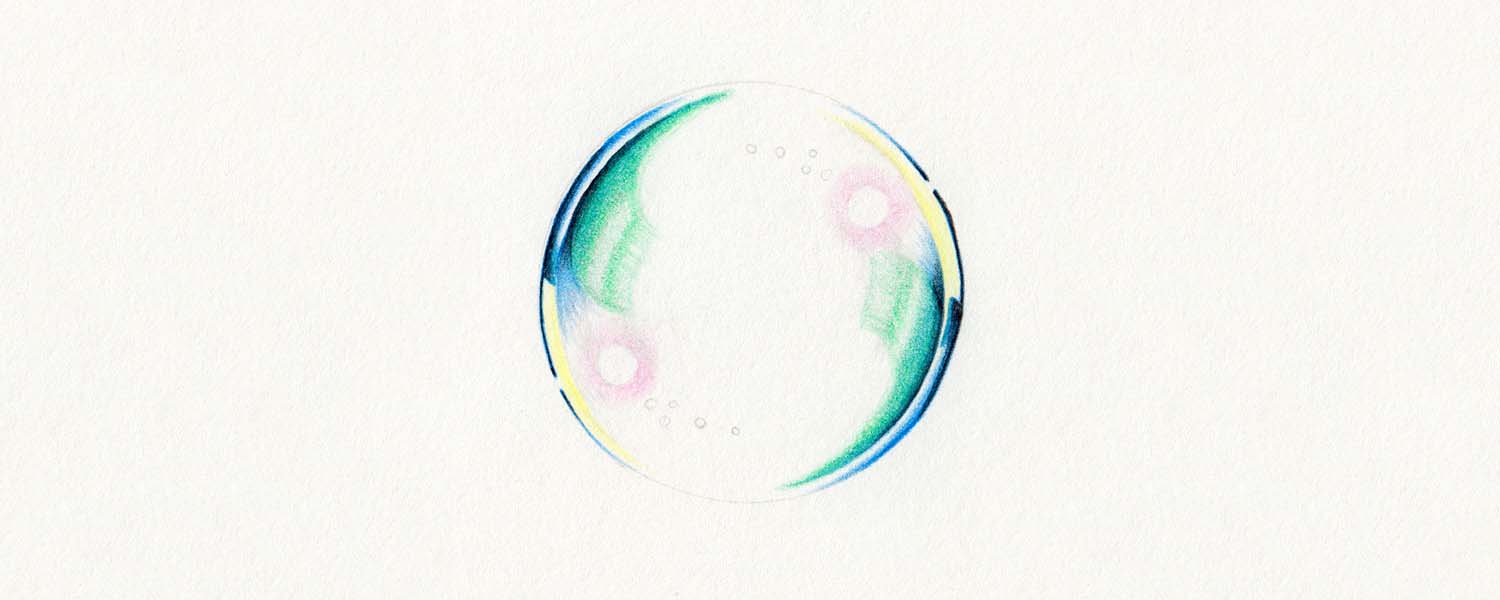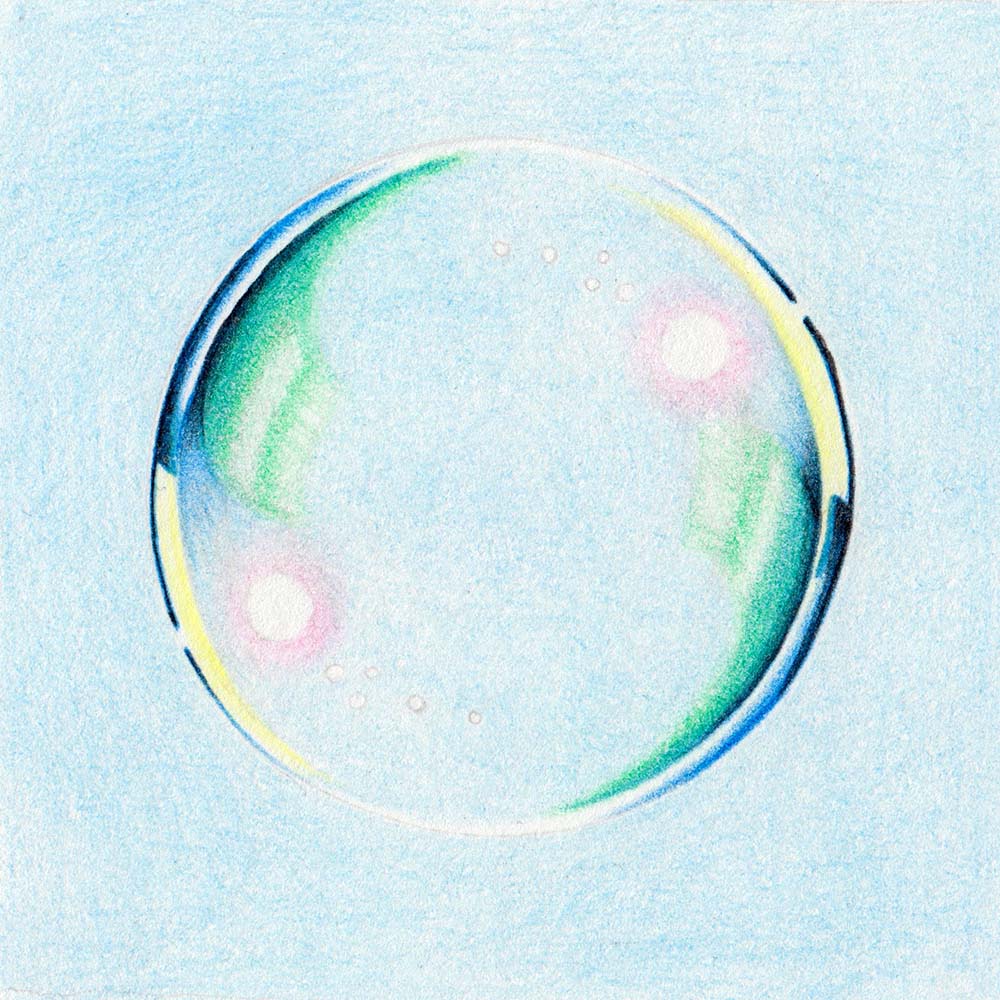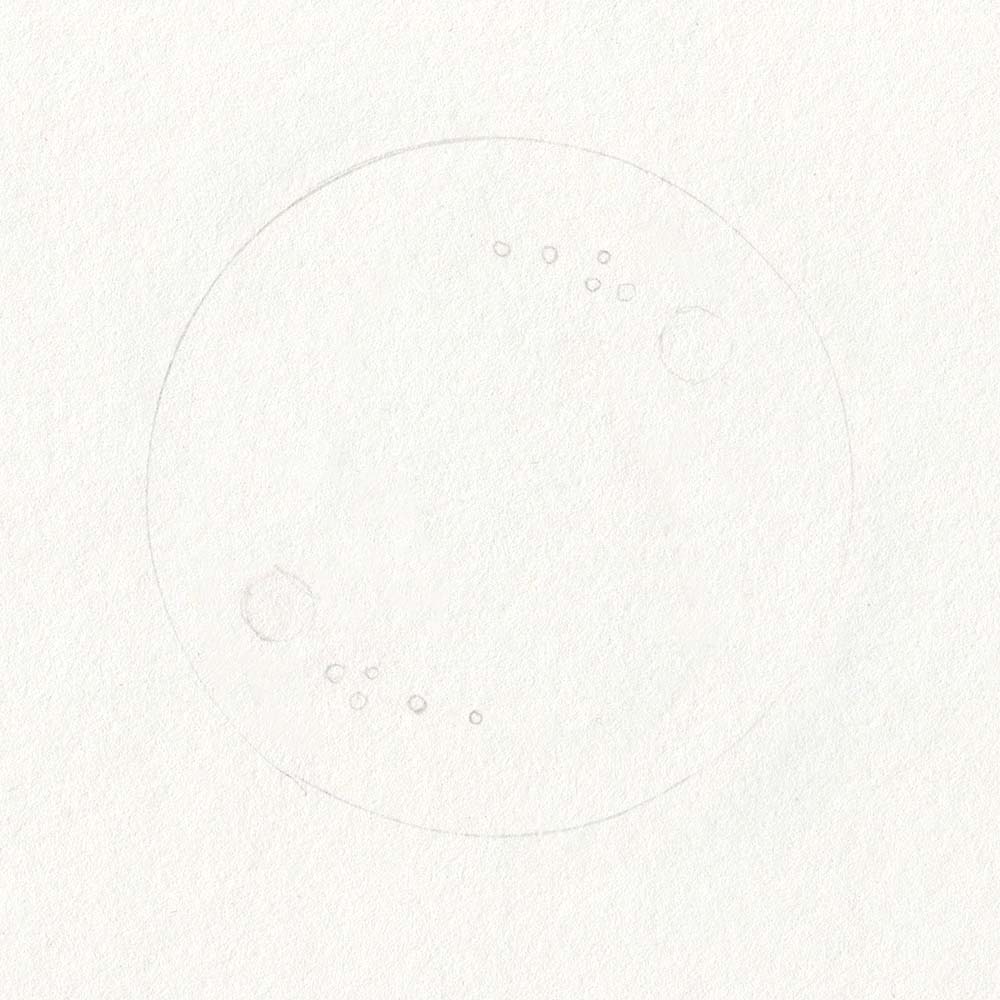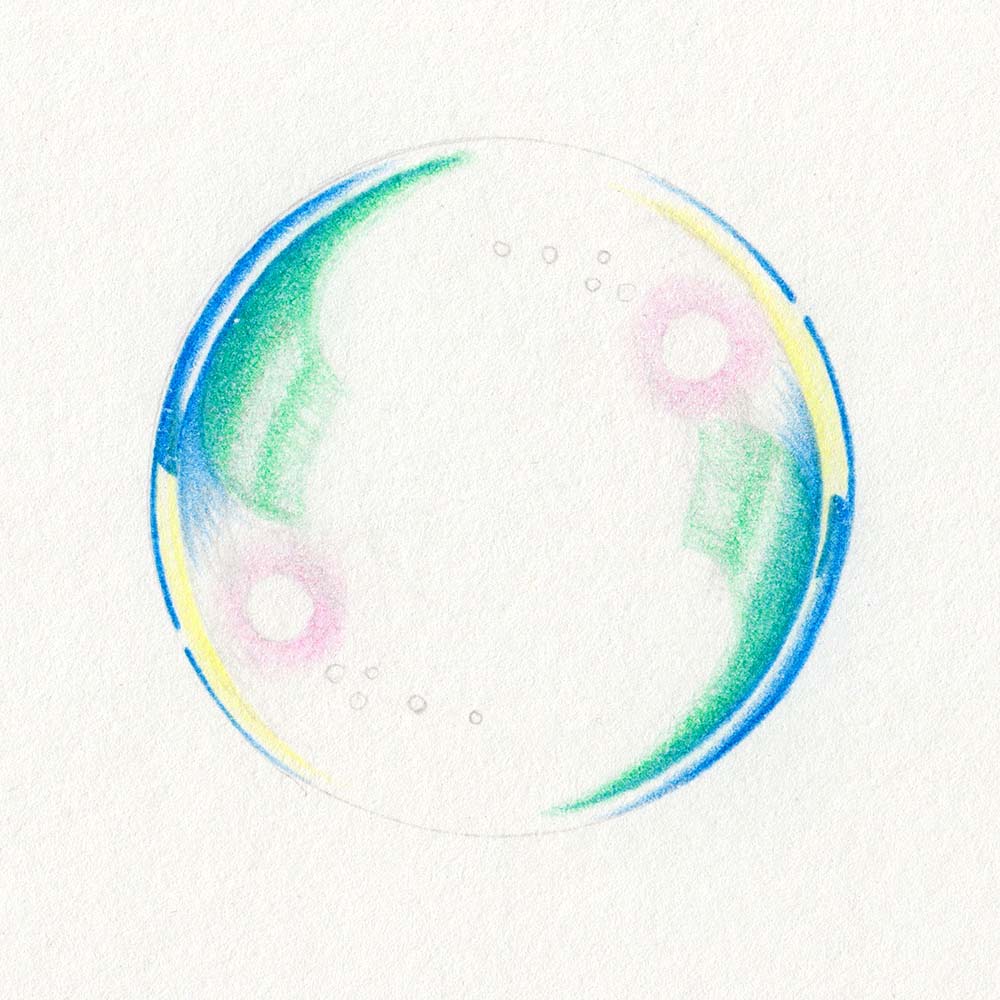
How to Draw Bubbles
They say if you want to learn how to draw something, you should try drawing from a real life reference to truly be able to study and understand it. But this seems almost impossible to do with a bubble, as they burst after just a few seconds and literally disappear into thin air.
Sharpen your colored pencils and start looking for a photo reference, because we will go through a few basics for drawing bubbles together.
Sketch of a Bubble
Before we start, one thing is particularly important: we have to mentally divide bubbles into two halves, one half of which is not only the horizontal but also the vertical reflection of the other half.
In the example sketch, I have drawn light points where you can see this type of reflection. It is not just mirrored, because the light reflexes are not all located on the right side of the bubble.
In our example drawing, the reflection is kept very simple. If you want to draw the reflection of a forest or a house, you should consider the curvature of the bubble in addition to the horizontal and vertical reflection. For example, you wouldn’t draw a straight tree, but you would need to curve it following the round surface of the bubble. But let’s focus on simple reflections for now.
Colours in a Bubble
The colour spectrum of a bubble can be as colourful as a rainbow, but you can also stick to just different shades of blues. Just pick whatever speaks most to you (or what you have at hand, if you are like me).
The bubble should have at least one light reflex (plus its horizontal and vertical reflection). That is, because a bubble needs a little bit of light to be visible in the first place. You probably wouldn’t really notice a bubble flying through the air on a cloudy grey day, as it would be just transparent.
To draw a simple bubble, leave the mid area free. If you want to draw a complex bubble, you can even play with overlapping reflections in the middle.
Contrasts in a Bubble
Especially along the edges of a bubble it can get quite dark sometimes, as we look sideways at a lot of surface that contains a lot of reflections of its surrounding.
This rich variety of strong contrasts gives the bubble the shine that makes it look like glass.
Background for the bubble
In our example we have drawn the bubble on white paper. If this is too boring for you, you can add any background.
On dark backgrounds, bubbles look even more intense, which is why many drawings of bubbles are drawn directly on black paper. The steps are the same, only here we would draw the white light reflections with a white pencil.

By the way, the preparations for a drawing by Sailor Mercury were the trigger for this little tutorial. I never drew bubbles before, but really wanted to include them in that drawing.
Similar Posts


